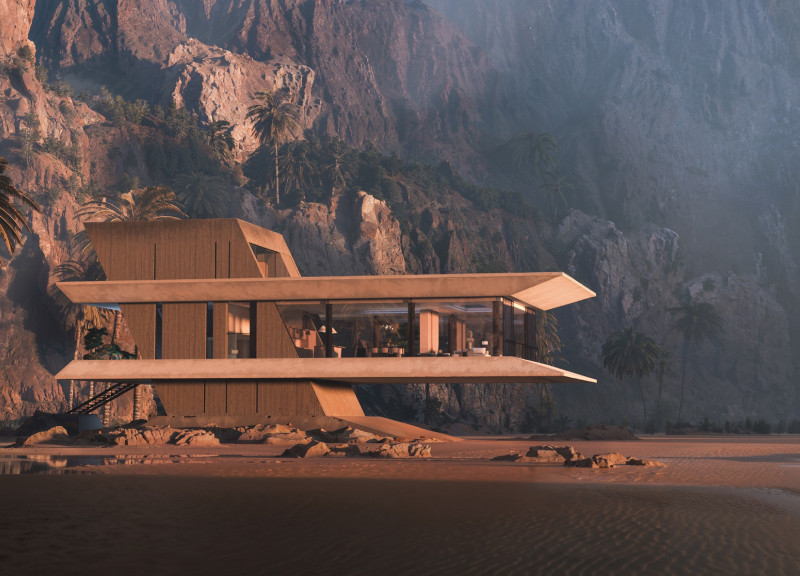5 key facts about this project
Upon entering the building, visitors are greeted with an open and welcoming atrium. This central space is designed to enhance connectivity and movement throughout the project. The use of large, strategically placed windows invites natural light, which not only illuminates the space but also connects occupants with the outdoors. The choice of materials in the construction of the building further complements this ethos. Utilizing elements like reclaimed wood, glass, and locally sourced stone, the design promotes not just aesthetic continuity, but also environmental responsibility. The incorporation of natural materials establishes a sense of warmth and familiarity, grounding the structure in its setting.
Several important details contribute to the comprehensive usability of the project. The layout consists of multifunctional spaces that can adapt to various activities, ranging from classes and workshops to community gatherings and events. Each space is designed for flexibility, allowing for dynamic configurations to suit the needs of different groups. This adaptable architecture speaks to a growing trend in design that values multifunctionality and user-centric planning.
Additionally, unique architectural features are evident throughout the structure. The roofline has been innovatively designed with sloped angles that serve both aesthetic and practical purposes. This design not only reduces the visual mass of the building, creating an inviting silhouette, but also facilitates water runoff and incorporates features for rainwater harvesting. Such considerations underscore a commitment to sustainable design practices that prioritize long-term environmental impact.
Moreover, the building’s façade is significant in its design approach. Using a combination of vertical and horizontal elements, the façade promotes visual interest while providing necessary shading and privacy to internal spaces. This intentional relationship with facade design exemplifies how architecture can contribute to both form and function, reinforcing the overall theme of community and connectivity.
The project also boasts thoughtfully designed outdoor areas that extend its functional reach. Landscaping elements incorporate native plants, reducing maintenance needs and supporting local biodiversity. Outdoor seating areas and gathering spaces invite community members to interact, reinforcing the project’s role as a social common ground.
In exploring the architectural plans and sections, one can appreciate the meticulous attention paid to every aspect of the design. The spatial organization flows logically, with each area thoughtfully considered to enhance both user experience and operational efficacy. Architectural ideas such as passive heating and cooling, integration of green spaces, and pedestrian pathways reflect a modern understanding of how to design buildings that respond to environmental challenges.
This project exemplifies a diligent approach to contemporary architecture, embodying principles of sustainability, functionality, and community engagement. It stands as a model for future endeavors striving to combine these essential attributes. Exploring the architectural designs, plans, and sections can provide further insights into the innovative strategies employed throughout the project, showcasing how contemporary architecture can effectively respond to societal needs while ensuring harmonious integration with the surrounding environment. The continued evolution of such designs reaffirms the importance of thoughtful architecture in shaping vibrant communities.


 Ioan-cătălin Ralea-toma
Ioan-cătălin Ralea-toma 




















